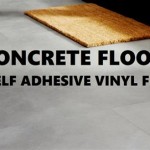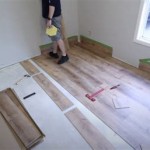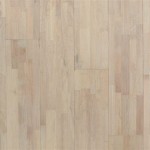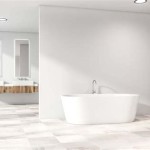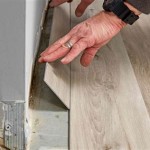Is Vinyl Plank Flooring Safe For Stairs And Landing Floors?
Vinyl plank flooring has emerged as a popular choice for homeowners and property managers due to its durability, water resistance, aesthetic appeal, and relatively easy installation. However, the question of its suitability and safety for stairs and landing floors requires a thorough examination of its properties, installation techniques, and potential risks. The safety assessment must consider factors beyond the flooring material itself, including subfloor preparation, tread nosing selection, and adherence to building codes.
This article aims to provide a comprehensive overview of the considerations involved in using vinyl plank flooring on stairs and landing floors, exploring the benefits, drawbacks, and necessary precautions to ensure a safe and long-lasting installation. The information presented here is intended to inform decisions regarding flooring choices and promote safer home environments.
Understanding Vinyl Plank Flooring
Vinyl plank flooring is a multi-layered synthetic flooring product designed to mimic the appearance of hardwood or stone. It typically consists of several layers: a wear layer, a decorative layer, and a core layer. Some vinyl planks also include an underlayment layer for added cushioning and sound absorption. The wear layer is a transparent top coating that protects the underlying decorative layer from scratches, stains, and wear. The thickness of the wear layer is a critical factor in determining the durability and longevity of the flooring, particularly in high-traffic areas like stairs and landings.
The decorative layer provides the aesthetic appeal of the flooring, often replicating the grain patterns and colors of natural wood or the textures and hues of stone. This layer is a printed image that is protected by the wear layer. The core layer provides the structural stability of the plank and is typically made of a waterproof material such as PVC (polyvinyl chloride) or a composite of PVC and other materials. The core layer is essential for preventing warping and buckling, especially in environments with varying levels of humidity.
Vinyl plank flooring is available in two main types: luxury vinyl plank (LVP) and vinyl composition tile (VCT). LVP is generally thicker and more durable than VCT, offering a more realistic appearance and a more comfortable feel underfoot. LVP also tends to have a more robust locking system for easier installation. VCT, on the other hand, is typically less expensive and more resistant to indentation but may not offer the same level of aesthetic appeal or comfort.
When considering vinyl plank flooring for stairs and landings, it is important to select a product with a sufficient wear layer thickness, a dimensionally stable core layer, and a slip-resistant surface. The specific requirements will depend on the expected traffic volume, the presence of children or elderly individuals, and the overall design aesthetic.
Benefits of Using Vinyl Plank Flooring on Stairs and Landings
Vinyl plank flooring offers several advantages that make it an attractive option for stairs and landing floors. These benefits include durability, water resistance, ease of maintenance, and aesthetic versatility.
Durability: High-quality vinyl plank flooring is designed to withstand heavy foot traffic and resist scratches, dents, and stains. This is particularly important on stairs and landings, which are often subjected to significant wear and tear. The wear layer thickness is a crucial factor in determining the durability of the flooring, with thicker wear layers offering greater protection against damage. Selecting a vinyl plank with a robust wear layer can significantly extend the lifespan of the flooring and reduce the need for frequent replacements.
Water Resistance: Vinyl plank flooring is inherently water resistant, making it suitable for areas that are prone to moisture, such as entryways and landings near bathrooms or kitchens. This is a significant advantage over hardwood flooring, which can be damaged by water exposure. The waterproof nature of vinyl plank also makes it easier to clean up spills and prevent water damage, which can be particularly beneficial on stairs, where spills can create slippery and hazardous conditions.
Ease of Maintenance: Vinyl plank flooring is relatively easy to clean and maintain. Regular sweeping or vacuuming is sufficient to remove dirt and debris, and occasional mopping with a mild detergent can help to maintain the appearance of the flooring. Unlike carpet, vinyl plank does not absorb stains or odors, making it a more hygienic option for stairs and landings. The ease of maintenance can save time and effort, making vinyl plank a practical choice for busy households.
Aesthetic Versatility: Vinyl plank flooring is available in a wide range of styles, colors, and patterns, allowing property owners to achieve a desired aesthetic without the high cost and maintenance requirements of natural materials. Vinyl plank can mimic the appearance of hardwood, stone, or tile, offering a realistic look and feel. This versatility allows for seamless integration with existing décor and provides flexibility in design choices. The availability of different plank sizes and installation patterns further enhances the aesthetic options.
Potential Risks and Mitigation Strategies
While vinyl plank flooring offers several benefits, it is important to be aware of the potential risks associated with its use on stairs and landing floors. These risks primarily relate to slip resistance, installation challenges, and potential environmental concerns.
Slip Resistance: One of the primary safety concerns with any flooring material used on stairs is slip resistance. Vinyl plank flooring can become slippery when wet or when covered with dust or debris. To mitigate this risk, it is essential to select a vinyl plank with a textured surface or to incorporate a slip-resistant coating. Additionally, stair treads with built-in traction strips can be used to enhance grip and prevent slips and falls. Regular cleaning and maintenance are also crucial to remove any substances that could reduce the slip resistance of the flooring.
Installation Challenges: Installing vinyl plank flooring on stairs and landings can be more complex than installing it on flat surfaces. Precise cutting and fitting are required to ensure a secure and aesthetically pleasing installation. Improper installation can lead to loose planks, uneven surfaces, and potential tripping hazards. It is highly recommended to hire a professional installer with experience in working with vinyl plank on stairs. Proper subfloor preparation is also essential for a successful installation. The subfloor must be clean, level, and free of any debris or moisture. Any imperfections in the subfloor can telegraph through the vinyl plank and create an uneven surface.
Environmental Concerns: Some vinyl plank flooring products contain volatile organic compounds (VOCs), which can be released into the air and potentially cause health problems. When selecting vinyl plank for stairs and landings, it is important to choose products that are low-VOC or VOC-free. Look for certifications such as FloorScore or GreenGuard, which indicate that the product has been tested and meets stringent indoor air quality standards. Proper ventilation during and after installation can also help to minimize exposure to VOCs. Additionally, consider the environmental impact of the vinyl plank flooring itself. Some manufacturers use recycled materials in their products, and some vinyl plank flooring can be recycled at the end of its lifespan.
In addition to these risks, it's important to consider the long-term durability of the product in relation to the specific usage and traffic expected on the stairs and landings. High-traffic areas may require more frequent replacement, even with durable vinyl plank options.
When using vinyl plank on stairs, the nosing of the tread is a critical safety component. The nosing is the edge of the stair tread that extends over the riser below. A properly installed nosing provides a visual cue for the edge of the step and helps to prevent slips and falls. It is important to select a nosing that is compatible with the vinyl plank flooring and that meets building code requirements. The nosing should be securely attached to the stair tread and should be slip-resistant. Many manufacturers offer matching nosing pieces specifically designed for their vinyl plank products.
Building codes often dictate specific requirements for stair construction and flooring materials, including slip resistance, tread depth, and riser height. It is essential to ensure that the vinyl plank flooring and its installation meet all applicable building codes. This may require obtaining permits and inspections from local authorities. Failure to comply with building codes can result in fines, delays, and potential safety hazards.

How To Install Vinyl Plank Flooring On Stairs In 6 Steps

Pros And Cons Of Installing Vinyl Flooring On Stairs Lx Hausys

Luxury Vinyl Tile Seamless Upstairs And Downstairs Solution

Pros And Cons Of Installing Vinyl Flooring On Stairs

Pros And Cons Of Installing Vinyl Flooring On Stairs Lx Hausys

An Expert Guide To Vinyl Plank Flooring For Stairs Direct Blog

Steps To Install Lvp On Stairs Flooring Insights

Can You Install Luxury Vinyl Plank On Stairs

How To Choose Flooring For Stairs

Creating Custom Bent Luxury Vinyl Steps Us Floor Bending
See Also

